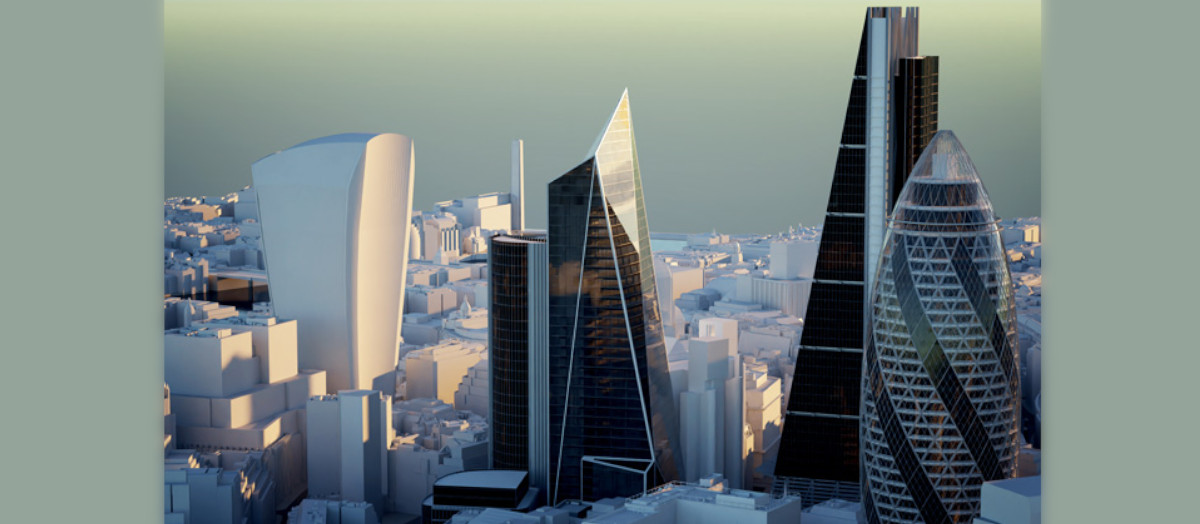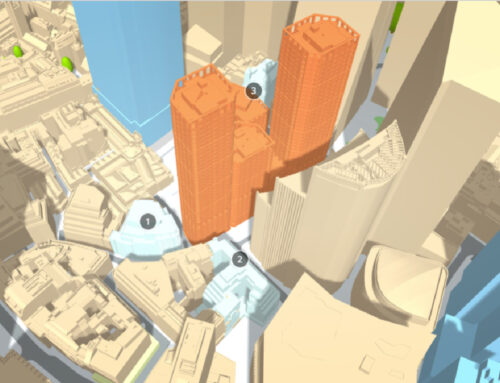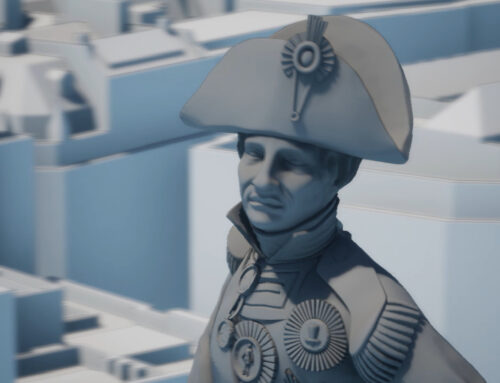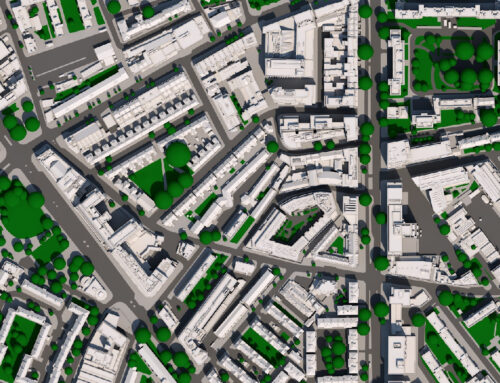London Skyscrapers are notoriously complex and test the available technology to the max. Nvidia Omniverse is the new virtual collaboration platform which places a big emphasis on real-time physically accurate visualisation. Built around Pixar’s Universal Scene Description (USD), an open source file format with origins in visual effects and animation, it allows multiple contributors, from across the entire design team using an array of applications, to collaborate effectively. With the ability to include models, animations, materials, lights, and cameras, it can be used to share a variety of viz-focused data seamlessly between 3D applications.
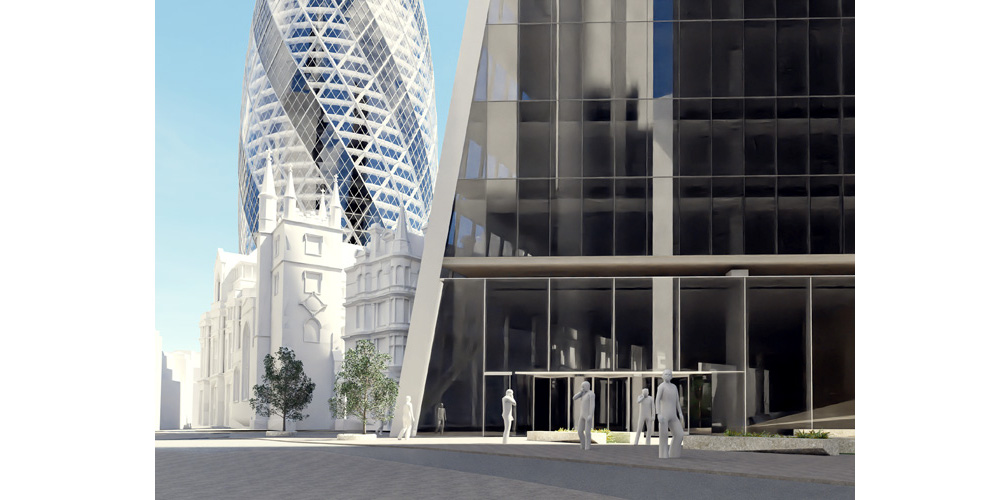
Improved interoperability and collaboration
Omniverse works with several 3D design tools, including SketchUp, Revit, and Rhino, and viz tools 3ds Max, Unity, Maya, Unreal Engine, Houdini and (soon) Blender. Importantly, it replaces traditional file-based import / export workflows, with data flowing freely from each 3D application via a plug-in ‘connector’, which creates a live link to the Omniverse ‘nucleus’.
Once the link is established, and the initial model is synced, the connectors only transmit what has changed in the scene, allowing everything to be ‘real time and dynamic’. Move a wall in Revit, for example, and it will update live in Omniverse, along with any other connected application. It means teams can use whichever tool best suits the design or modelling task at hand and switch seamlessly between them.
Aggregated London Skyscrapers models can be viewed in Omniverse View, an Omniverse App with a toolkit designed specifically for visualising architectural and engineering projects using physically-based real-time rendering with global illumination, reflections and refractions.
View includes libraries of materials, skies, trees and furniture, and painting tools to scatter large amounts of assets like trees and grass. Dynamic clouds and animated sun studies are also included, along with section tools. More functionality will be added as the platform evolves and it’s also possible to create custom features using C++ or Python extensions.
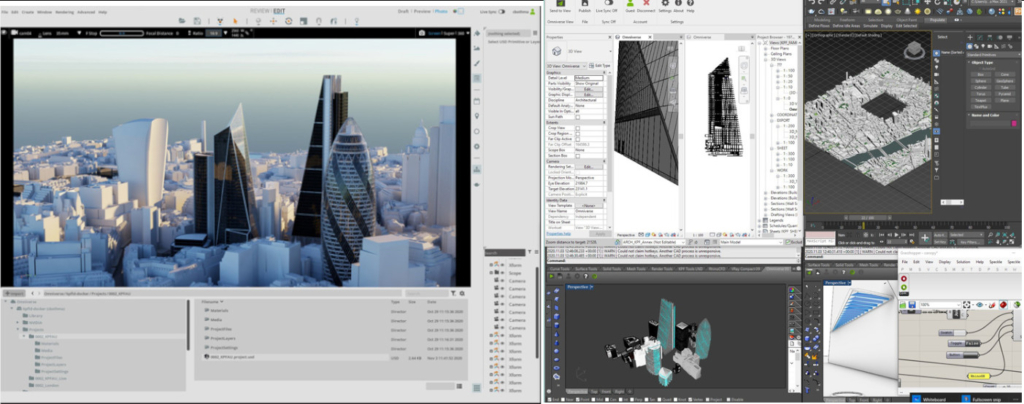
Streaming 3D Models of Skyscrapers to any device
Omniverse View can run on an Nvidia RTX powered desktop or mobile workstation, allowing users to get an interactive viewport into the shared scene. However, the real power of the platform comes into play when using Nvidia RTX Server, a reference design available from a range of OEMs with multiple Nvidia RTX GPUs.
RTX Server can perform multiple roles. It not only provides buckets of processing power for path tracing, but with Nvidia Quadro Virtual Data Center Workstation (Quadro vDWS) software users can access the Omniverse platform using GPU-accelerated virtual machines. It means all collaborators can view projects in full interactive ray traced quality on low powered hardware – be it a laptop, tablet or phone.
For Cobus Bothma, director of applied research at Kohn Pedersen Fox (KPF), this is one of the most exciting developments, and he’s looking forward to being able to stream Ominverse projects live to any lightweight device. “We can’t put a big GPU-accelerated machine in everybody’s face, the whole time.”
One might presume that Bothma sees this an opportunity to improve communication with clients, but this isn’t the priority. “When I look at technology and the use of it at KPF I always look at team collaboration first, team communication, and the second thing is clients.”
“We don’t have a top down design necessarily, we enable everybody to give their feedback and design input, and so forth,” says Cobus, adding that Omniverse streaming will allow principals, directors, or project managers that are not au fait with 3D applications, to look themselves. “It’ll give them the ability to go and say ‘well if a designer says the sun is going to shine on this, for example, and the glass is not going to be too blue’, they’re going to be able to say ‘well let me have a look quickly and open my iPad and go in, adjust the sun go look at it.’”
“Democratisation of technology in the industry is one of the big things we’re driving right now. When working on London Skyscrapers, we want to get more people to use the technology without having to be coders and scripters or visualisation experts. And we’re seeing it happen.”

